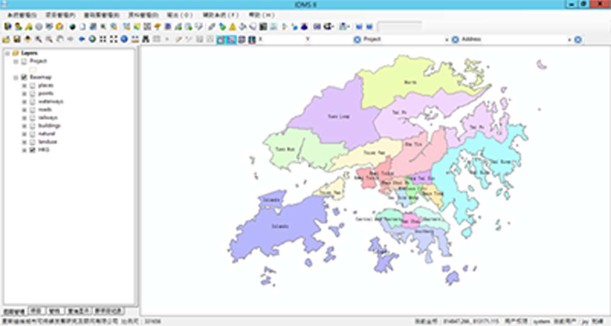Integrated Data Management System (IDMS)

The Integrated Data Management System (IDMS) is a system designed to provide a Geographic Information System (GIS) knowledge-based interface for management of the vast amount of precious underground utilities information, as well as efficient data input and reporting functions. System design bases on utility condition in Hong Kong and it makes for Hong Kong users.
Characteristics of IDMS
IDMS is capable of handling the following function modules: CCTV Survey, Utility Survey, Manhole Survey, Water Leakage Detection, Ground Penetrating Radar (GPR) and Leak Noise Correlator (LNC) Inspection.
With the establishment of IDMS, the entire duration of utility survey and subsequent mapping process could be significantly reduced. There are totally nine steps for utility mapping including
- data capturing
- data migration and conversion
- data input, iv) data updating and validation
- spatial query and searching
- visualization
- mapping
- generating report, and ix) data export
IDMS is compatible with most currently adopted forms of reports and checking system such as STC25, Examiner, WinCAN, and Automapper, etc. IDMS provides an excellent interface to manage and integrate all the utility survey information including the alignment of pipes, ducts and drains the location of manholes through GIS knowledge based platform.
Benefits of IDMS
- uplifting the living standard through reducing the number of excavation and utility breakdown
- reducing the expenditure of government on utility survey and information consolidation
- provides complete, shared, verified and seamless utility information coverage to support safer, effective road opening
- helps to establish a better slope maintenance
- provides an efficient information sharing and uplifts the overall cost effectiveness
- a good resource for the verification of existing utility record
- assist the development of a centralized repository for all utilities information
- greatly shorten the duration of site work by transforming the current practice on-site measurement into on-site verification and validation